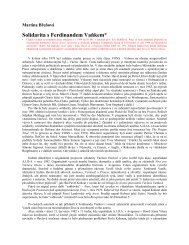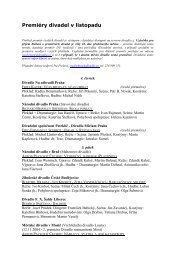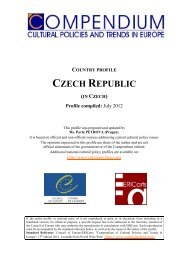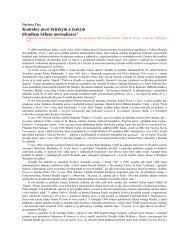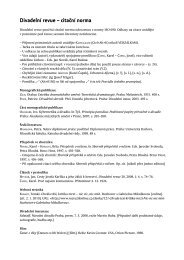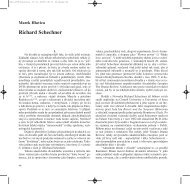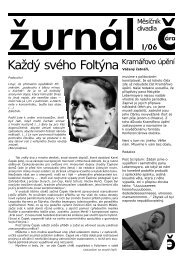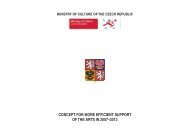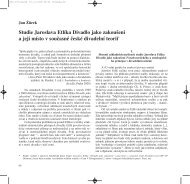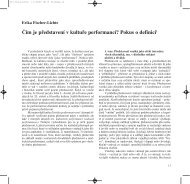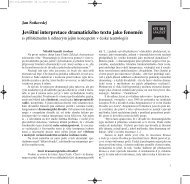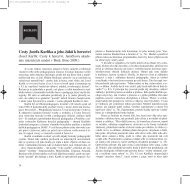METAPHOR AND IRONY 2 - Divadlo.cz
METAPHOR AND IRONY 2 - Divadlo.cz
METAPHOR AND IRONY 2 - Divadlo.cz
Create successful ePaper yourself
Turn your PDF publications into a flip-book with our unique Google optimized e-Paper software.
Tröster worked also with other non-material elements of stage design such<br />
as movement, time, rhythm and light. He conceived light not in any way as a<br />
mood-maker, but chiefly as an element shaping material on the surface of the<br />
set and on the architectural forms of the stage. The groundplan of the acting<br />
space was made rhythmical by a system of angled lines and backcloths. He<br />
determined the space of the stage by a composition of three-dimensional<br />
objects, varying in confrontation with the actor's movement. He felt not only<br />
architecturally but sculpturally.<br />
“First it is necessary for the director and the designer to find a shared<br />
attitude towards the subject. Another approach resembles sculptural work. The<br />
weight of the play is laid bare up to certain firm points which create the future<br />
skeleton of the dramatic creation.” 5<br />
This comparison is something of a metaphor, but it applies both vicariously<br />
and to concrete work. Tröster worked on Shakespeare's Julius Caesar<br />
(National Theatre Prague, 1936) with the director Jiří Frejka, originally an<br />
initiator of the small avant-garde theatre of the 1920s. The larger-than-life<br />
sculptures (a bust of the Emperor and the lower fragment of an equestrian<br />
statue, one horse's hoof stepping forward) were installed on a massive inclined<br />
plinth and, in that way, they were presented like “shots” from a worm's eye<br />
František Tröster: The Inspector General, Nikolai V. Gogol; 1936<br />
14



